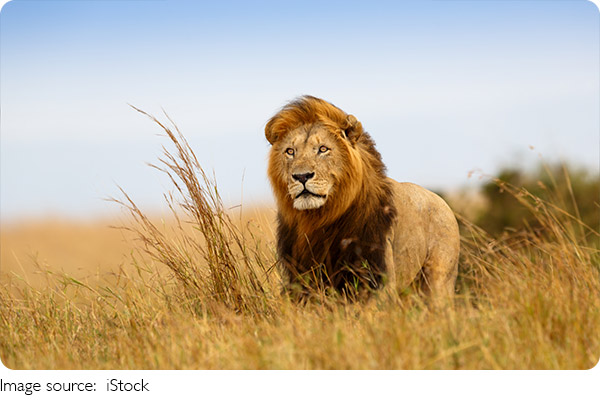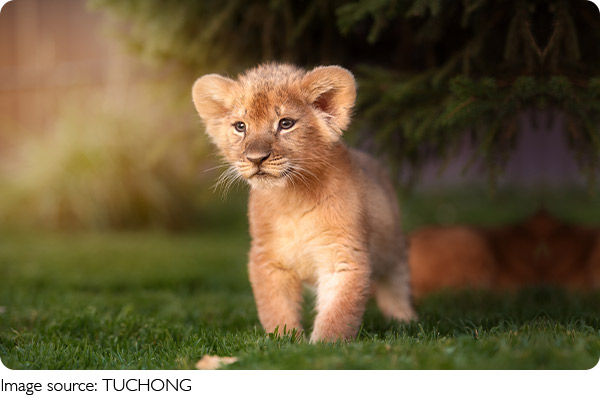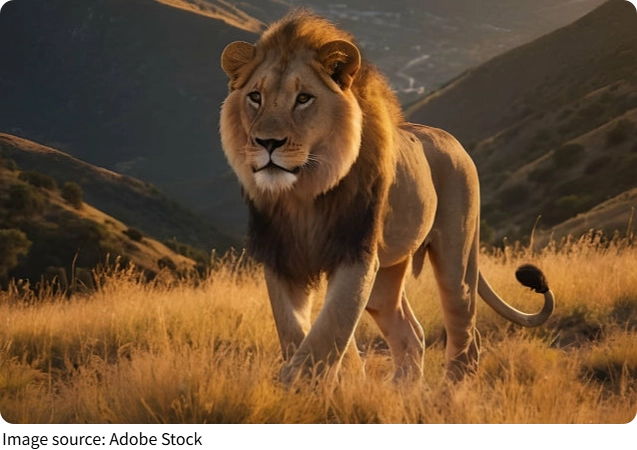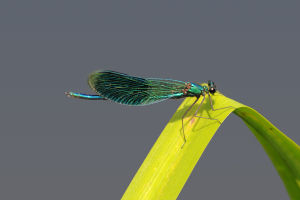Lions in Transition

Have you ever spotted a majestic lion on the African savanna and wondered: is this a lion king guarding his pride, or a lone male wandering in search of his destiny?
Many of us Lykkers are fascinated by lions, but few truly understand the subtle differences between a leader of a pride and a solitary male. Let's dive into the world of lions and learn how to tell the difference.
The Unique Appearance of Male Lions
Lions are the only big cats where males and females look distinctly different. Males typically grow impressive manes around their necks, while females do not. Some species, like the Kalahari lion, even have manes extending to the chest and legs. But here’s the twist—when lion cubs are born, they all look similar. Their bodies are covered in spots, which fade as they grow.

The Lion’s Social Life: It's Complicated
Lions live in social groups known as prides. These prides usually consist of a few females, their cubs, and one or two males. It’s rare to find more than two males in one pride, and most African prides include six or seven adult females. Male lions, on the other hand, often go through a period of solitude. During this phase, they leave their birth pride and wander the savanna—hoping one day to become kings themselves.
The Harsh Journey from Cub to King
Becoming a lion king isn’t easy. Males must face tough battles to take over a pride. And when a new male takes over, he might remove the existing cubs to make sure his future offspring won’t face competition. Even if a young male was born in the pride, he might be forced out once he grows up. This is the beginning of his lonely journey across the plains—a wandering lion in search of his own pride.
Look at the Size: Bigger Lions Rule
One of the easiest ways to tell a wanderer from a lion king is by size. In lion society, strength equals leadership. A large male lion, weighing over 50 kg more than others, has a huge advantage in fights. That kind of weight difference often means the bigger lion wins and keeps challengers at bay. So when we see a muscular lion resting proudly, there's a good chance he’s a pride leader.
But Big Doesn't Always Mean King
Still, we can't judge only by size. A strong lion might still be wandering, looking for a pride to take over. On the flip side, a lion king might look thinner if the pride struggles with food shortages. Size comparisons are only helpful when we have a reference, and for many of us, telling whether a lion is "big enough" isn't that simple. That’s why we need more clues.

Watch for Signs of Strength and Health
Wandering lions often look worn out. Life alone means less food, more danger, and no help with hunting. They rely on scavenging more than hunting and are often undernourished. This can lead to skin problems, visible ribs, and even infections. In contrast, pride leaders usually look well-fed, healthy, and groomed. They eat first, rest more, and enjoy better protection from threats.
Energy and Spirit Tell a Lot
Another way to judge a lion is by its energy. Pride leaders often look more powerful, alert, and confident. Think of it like this—just as a dominant tiger looks fierce and in control, lion kings also radiate strength through their body language. Their mane might look thicker, their eyes more focused, and their movements more sure. It’s the kind of presence that can’t be faked.
Behavior Reveals Their Role
We should also observe their habits. Pride leaders patrol their territory regularly, marking the area with scent and roaring loudly to declare their presence. They like resting under trees, staying visible and vocal. On the other hand, wandering males don’t show strong territorial behavior. They stay cautious, move quietly, and avoid attracting attention until they find a pride to challenge.
No Single Rule Works Every Time
Of course, we can’t rely on just one of these clues. Even when a lion ticks all the boxes—big, confident, healthy—it might still be a wanderer. But the more clues we put together, the clearer the picture becomes. That’s how researchers and photographers tell these majestic animals apart.
Let’s Spot the Lions Like Pros!
Next time we’re watching a wildlife documentary or lucky enough to be on safari, we’ll have a sharper eye. We’ll know to look beyond the mane and watch the behavior, body, and energy. Are we seeing a lion that rules with strength, or one still seeking his place in the savanna?
Lykkers, have you ever seen a lion in the wild—or maybe in a zoo—and wondered about its story? Share your experience with us! Let’s uncover the secrets of the animal kingdom together.
Lions 101 | Nat Geo Wild
Video by Nat Geo Animals
-
 Damselfly WondersDiscover the Secret Life of Damselflies: Why These Colorful Insects Are Nature’s Tiny Marvels You Can’t Miss!
Damselfly WondersDiscover the Secret Life of Damselflies: Why These Colorful Insects Are Nature’s Tiny Marvels You Can’t Miss! -
 Pets' Emotional WorldsDiscovering How Dogs and Cats Differ in Sensing and Responding to Our Feelings
Pets' Emotional WorldsDiscovering How Dogs and Cats Differ in Sensing and Responding to Our Feelings -
 Personality and PetsExploring How Pet Owners' Personality Traits Influence Their Choice of Pet Species
Personality and PetsExploring How Pet Owners' Personality Traits Influence Their Choice of Pet Species